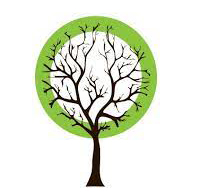Throughout this page you will find information about the urban forest of the Madison Area. This information is a compilation of data acquired by the Urban Tree Alliance independently and through research collaboration with the University of Wisconsin-Madison. Our goal is to understand the urban forest as a whole (including public and private lands) so that we can make better decisions about how to manage it. Information is divided into four categories: Canopy Cover, Species Diversity, Urban Forest Benefits, and Current Actions. If you have further questions about this information or are interested in acquiring similar data for your property, neighborhood, or city please contact us.
The Benefits of Trees
Urban forests provide a multitude of benefits that make city-dwelling enjoyable. They remove air pollutants, lessen home heating and cooling costs, reduce the urban heat-island effect, absorb noise, capture stormwater, sequester carbon, increase property values, and provide cultural and aesthetic value. Below you’ll find a summary each of these services.
Large trees provide exponentially greater services to their community. This is why the Urban Tree Alliance stresses the importance of caring for aging trees.
To calculate the benefits of the trees on your property visit The National Tree Benefit Calculator.
